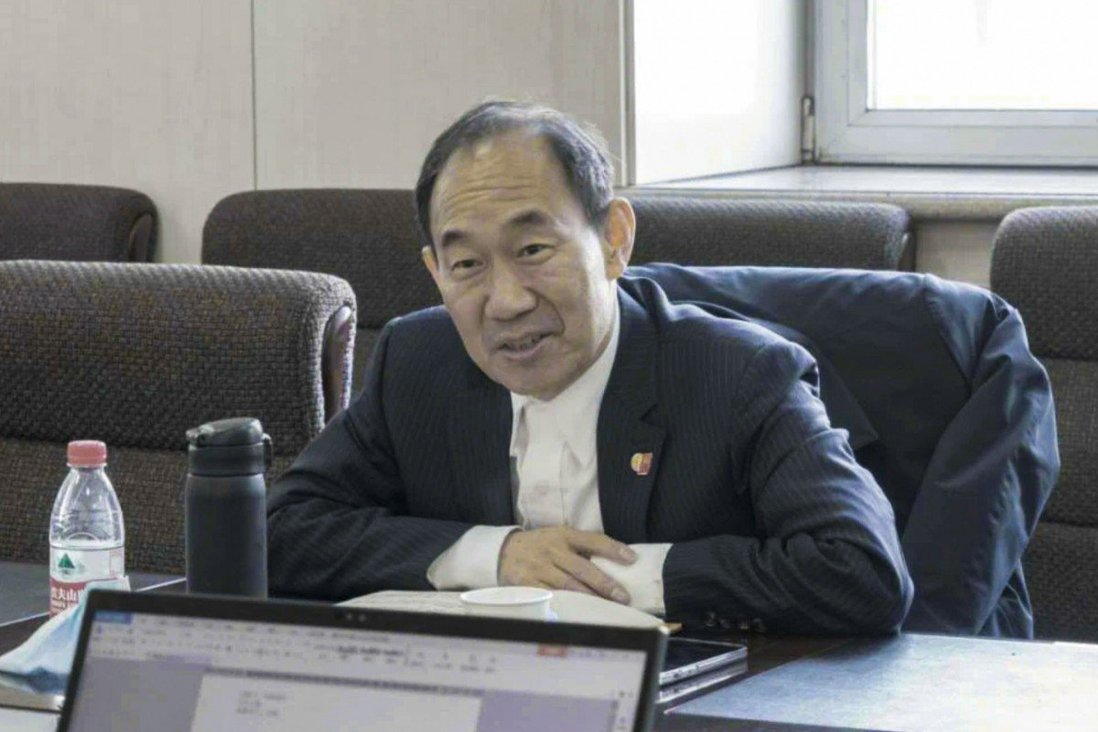

Zhang Zhijian, former vice-president of Harbin Engineering University.
<p>
The mysterious death of a famous nuclear scientist has spotlighted the role of Harbin&mdash;a city better known for its annual sub-zero ice festival&mdash;as China&rsquo;s military technology hub.</p>
<p>
The South China Morning Post (SCMP) is reporting that Zhang Zhijian, of Harbin Engineering University (HEU) had died after falling from a building on Thursday.</p>
<p>
<iframe allow="accelerometer; autoplay; clipboard-write; encrypted-media; gyroscope; picture-in-picture" allowfullscreen="" frameborder="0" height="315" src="https://www.youtube.com/embed/xV75kGKLofs" title="YouTube video player" width="560"></iframe></p>
<p>
Zhang, was vice-president at the university, located in Harbin, the capital of China&rsquo;s northernmost Heilongjiang province. Not far from the Russian border, Harbin had an early start in science research, when the former Soviet was extensively collaborating with the newly emerged People&rsquo;s Republic of China (PRC). Even earlier,&nbsp; the city became part of the South Manchuria branch of the Chinese Eastern Railway , which was built by the Russian Empire between 1898 -1902.</p>
<p>
The police have ruled out homicide as the cause of death, but uncomfortable questions are being asked because of the sensitive nature of work that has been carried out by the HEU.</p>
<p>
The daily pointed out that HEU was one of the&nbsp; two Chinese Universities,&nbsp; known for their close ties with China&#39;s weapons development programme, which was banned from receiving US developed advanced computer software.</p>
<p>
<a href="https://www.scmp.com/news/china/science/article/3137939/leading-chinese-nuclear-scientist-dies-fall-building">Leading Chinese nuclear scientist dies in fall from building</a></p>
<p>
The US Commerce department, last year, had added HEU in its &ldquo;entity list&rdquo;&nbsp; suspecting dual-use work on campus.</p>
<p>
The US department accused HEU of attempting to acquire &ldquo;US-origin items in support of programmes for the People&rsquo;s Liberation Army&rdquo;.</p>
<p>
Washington had also sanctioned the Harbin Institute of Technology (HIT)-a research university in the same city known for developing an array of hi-tech weapons including nuclear submarines and spy satellites. The University was subsequently denied MatLab&mdash;a popular US mathematical software, said a previous SCMP report.</p>
<p>
<a href="https://www.scmp.com/news/china/science/article/3109555/us-software-fuels-chinas-military-research-despite-washington">US software fuels China&rsquo;s military research, despite Washington ban</a></p>
<p>
The write-up pointed out that China&rsquo;s military industrial complex was making extensive use of US developed software.</p>
<p>
For instance, it cited a research paper published in the Chinese Journal of Aeronautics which revealed that US software was being used to simulate the flight parameters of a hypersonic missile, which travelling at least five times the speed of sound, could breach any existing anti-missile defence systems.</p>
<p>
The daily said that Zhang Feng, a professor with the National University of Defence Technology in Changsha, central China, led a team of researchers which focused on controlling the manoeuvrability of the weapon, when travelling at five times the speed of sound or above.</p>
<p>
The research paper said that Zhang&rsquo;s team used software provided by Ansys, a US company based in Canonsburg, Pennsylvania, for most of the aerodynamic simulations.</p>
<p>
It added that more than 80 per cent of mainstream tools used by Chinese scientists and engineers were mostly imported from the US.&nbsp;</p>
<p>
Despite the clamour for denying dual-use items to curb China&rsquo;s transition to internet based automated Industry-4.0, Ma Baofeng, a professor with the Beijing University of Aeronautics and Astronautics, told SCMP that American companies did not want to lose the huge and rapidly growing Chinese market in the research and development arena.</p>
<p>
&ldquo;Everyone wants to make money, so they will find various ways to go around,&rdquo; Ma was quoted as saying.</p>
The Defence Research and Development Organisation has offered 28 of its designed and developed weapon…
Nepal Foreign Minister Arzu Rana Deuba announced that 11 Nepali nationals being evacuated from Iran…
On June 21, 2025 (BST), Sikyong Penpa Tsering from the Central Tibetan Administration received a…
Strengthening maritime cooperation in the Indian Ocean Region, INS Teg, a frontline stealth frigate of…
Union Minister Hardeep Singh Puri paid tributes to the victims of the Kanishka bombing and…
The Baloch Yakjehti Committee marked three months since the arrest of the organisation's leaders such…